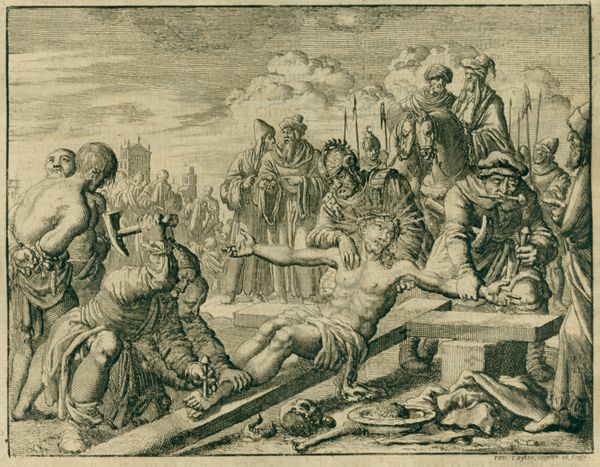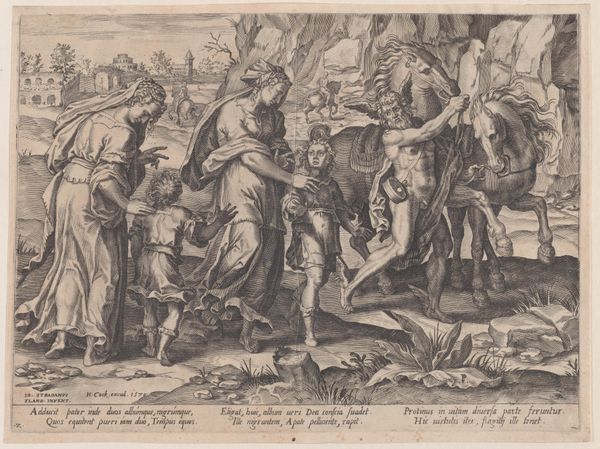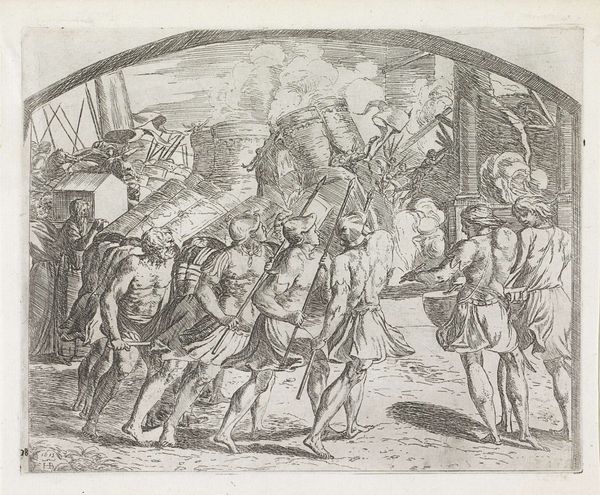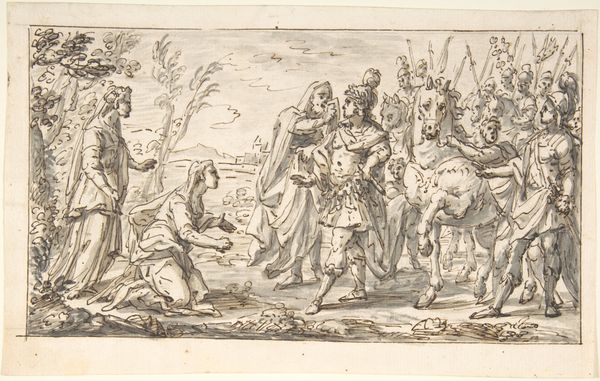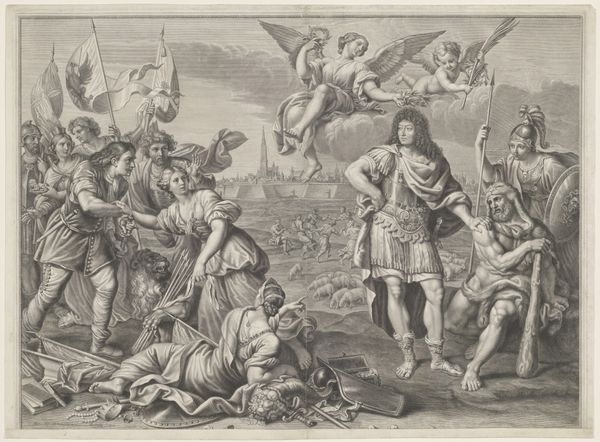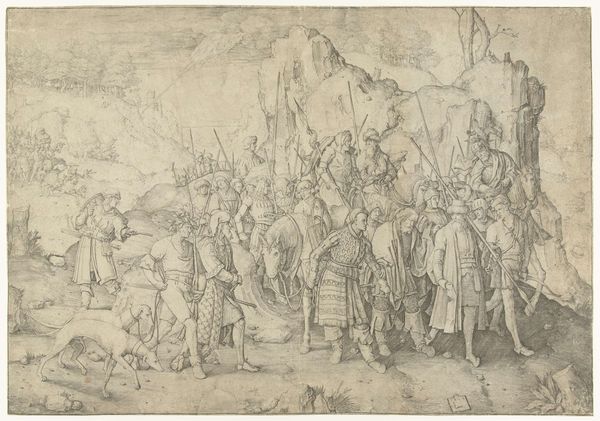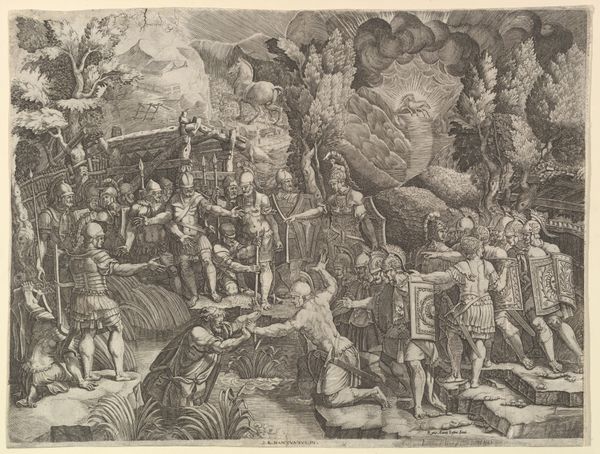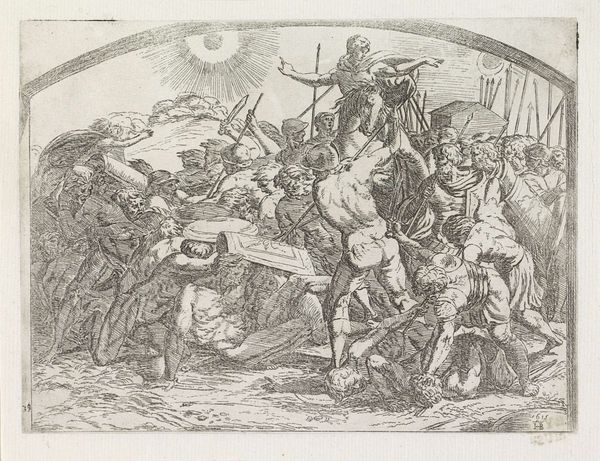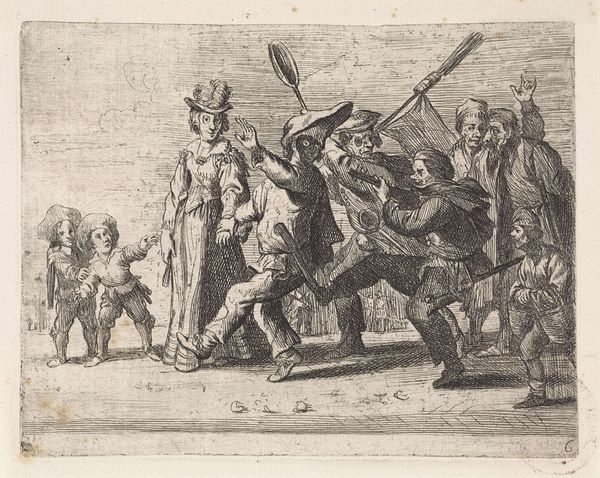
drawing, ink, engraving
#
drawing
#
baroque
#
figuration
#
ink
#
history-painting
#
engraving
Dimensions: height 298 mm, width 611 mm
Copyright: Rijks Museum: Open Domain
Curator: This engraving before us is "Triumph of a Roman Emperor", believed to be created by Giovanni Lanfranco sometime between 1592 and 1647. Editor: Well, Giovanni's definitely crammed a lot of, dare I say, controlled chaos into this scene. It feels almost… exuberant, yet somehow distant. What's your initial reaction? Curator: It strikes me as a grand ballet of power and subservience rendered in stark monochromatic detail. The Emperor, enthroned on his chariot, seems less a conqueror and more a figurehead, almost swallowed by the teeming figures around him. Editor: Yes, it’s quite an overwhelming composition, isn't it? A teeming humanity, you say. But look how the artist has used the very deliberate repetition of forms to draw the eye—the repeated archways mirroring the curves of the chariot wheels, the layered crowds... Is there any intentional purpose, perhaps, to emphasize imperial order rather than individual human form? Curator: Precisely! Note the formal precision achieved through ink—etching, engraving and drypoint methods—contributing a classical feel of clarity to a scene that risks being overwhelmed. It's a fascinating technical tightrope walk! I love to think of Giovanni in the studio just drawing and thinking... Editor: It does give the artwork a very nice finish; almost an organized quality even though so many figures inhabit a small space. It's Baroque but… almost restrained. The historical painting is obvious. But look closely! Can we see a political argument for this time embedded into the images of the old Rome? Curator: Ah, the undercurrents of Renaissance Rome swirling into the 17th century... Perhaps! I sense that while outwardly celebrating imperial glory, Lanfranco might be questioning the very nature of authority. The individual faces are so lost in the parade; it leads me to consider the personal sacrifices involved. Editor: So you're seeing this as a muted warning about power’s effect of those caught up within its sway rather than an unabashed show of glory? Intriguing! Curator: Ultimately, Giovanni delivers the Roman triumph as grand opera: both dazzling spectacle and intimate human drama coexisting in a fleeting moment. Editor: Beautiful. The interplay between individual story and political statement…a compelling dance, expertly choreographed. Well said.
Comments
No comments
Be the first to comment and join the conversation on the ultimate creative platform.

